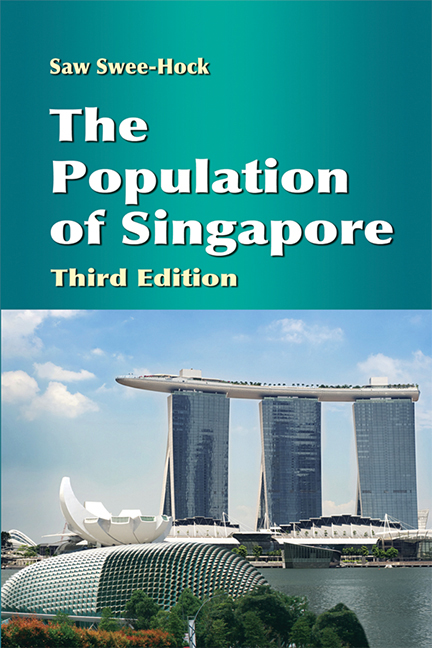Book contents
- Frontmatter
- Contents
- List of Tables
- List of Figures
- Preface
- Preface to Second Edition
- Preface to Third Edition
- 1 Background
- 2 Population Growth and Distribution
- 3 Changing Population Structure
- 4 Migration
- 5 Mortality Trends and Differentials
- 6 Marriage Trends and Patterns
- 7 Divorce Trends and Patterns
- 8 Fertility Trends and Differentials
- 9 Family Planning, Abortion and Sterilisation
- 10 Fertility Policies and Programmes
- 11 Immigration Policies and Programmes
- 12 Labour Force
- 13 Future Population Trends
- Appendix
- Bibliography
- Index
2 - Population Growth and Distribution
Published online by Cambridge University Press: 21 October 2015
- Frontmatter
- Contents
- List of Tables
- List of Figures
- Preface
- Preface to Second Edition
- Preface to Third Edition
- 1 Background
- 2 Population Growth and Distribution
- 3 Changing Population Structure
- 4 Migration
- 5 Mortality Trends and Differentials
- 6 Marriage Trends and Patterns
- 7 Divorce Trends and Patterns
- 8 Fertility Trends and Differentials
- 9 Family Planning, Abortion and Sterilisation
- 10 Fertility Policies and Programmes
- 11 Immigration Policies and Programmes
- 12 Labour Force
- 13 Future Population Trends
- Appendix
- Bibliography
- Index
Summary
In studying the history of the population in Singapore, it is best to commence with the year 1819 when Stamford Raffles first landed on the practically uninhabited island. To trace back to the period before this date, which is shrouded in myths and legends and with no reliable records, would be difficult and treading on unsafe ground. Even for the early nineteenth century, the data compiled from the various head counts are not completely accurate. Prior to World War II, the growth of the population was essentially through immigration as the indigenous inhabitants were few in number and contributed little to this growth. After the war, immigration was subjected to increasingly tighter control, and natural increase became the principal factor of population growth.
EARLY SETTLEMENT
In 1811 a band of about one hundred Malays from Johor, led by the Temenggong who was an officer of the Sultan of Johor, migrated southwards and settled on the banks of the Singapore River. At that time, however, the country was already populated by a small group of natives known as the orang laut, or sea gypsies, who were fishermen and pirates living exclusively in their boats along the small rivers. According to T.J. Newbold, when Raffles landed on the island on 28 January 1819, the population numbered about 150, living in a few shabby huts under the rule of the Temenggong. About 120 of them were said to be Malays and the rest Chinese. These figures are probably nothing more than an informed guess, but they cannot be far off the mark since the population then was extremely small. In any case, it is known for sure that during the next few months the population increased very rapidly through a great influx of immigrants.
The first people to be attracted by the many opportunities for making profits in the new trading post of Singapore were inhabitants from the older Dutch settlement of Malacca on the west coast of Peninsular Malaysia. In spite of the severe measures adopted by the Dutch to prevent their subjects from sailing to Singapore and the petty pirates in the waters of the Straits of Malacca, hundreds managed to find their way to the new settlement. Among these new arrivals, the majority were Malays and the rest were Chinese.
- Type
- Chapter
- Information
- The Population of Singapore , pp. 7 - 26Publisher: ISEAS–Yusof Ishak InstitutePrint publication year: 2012

